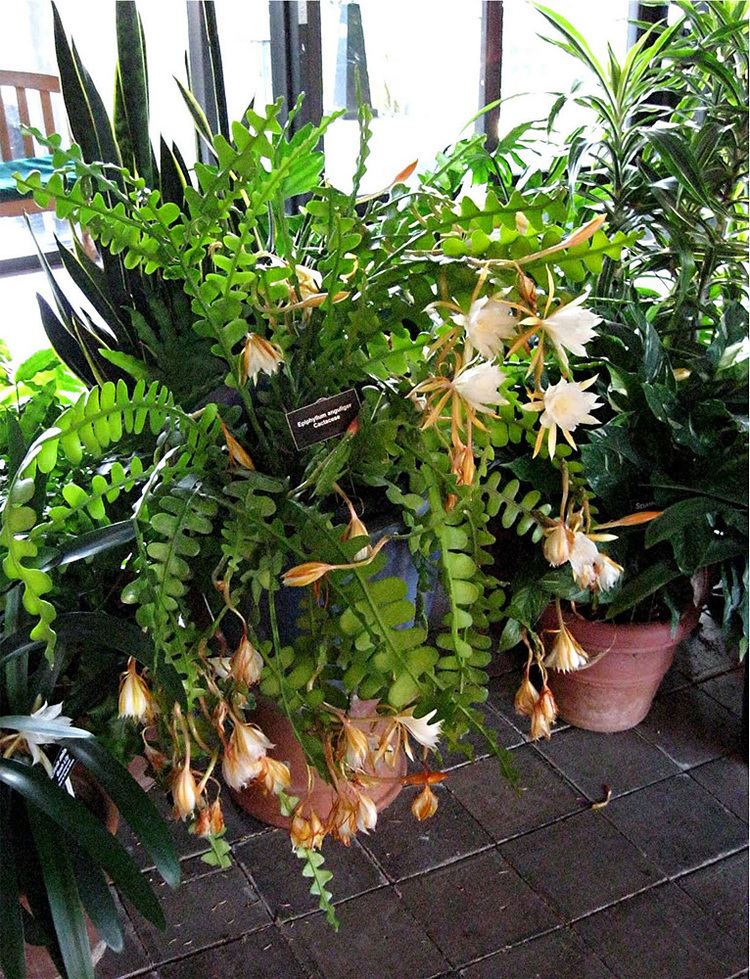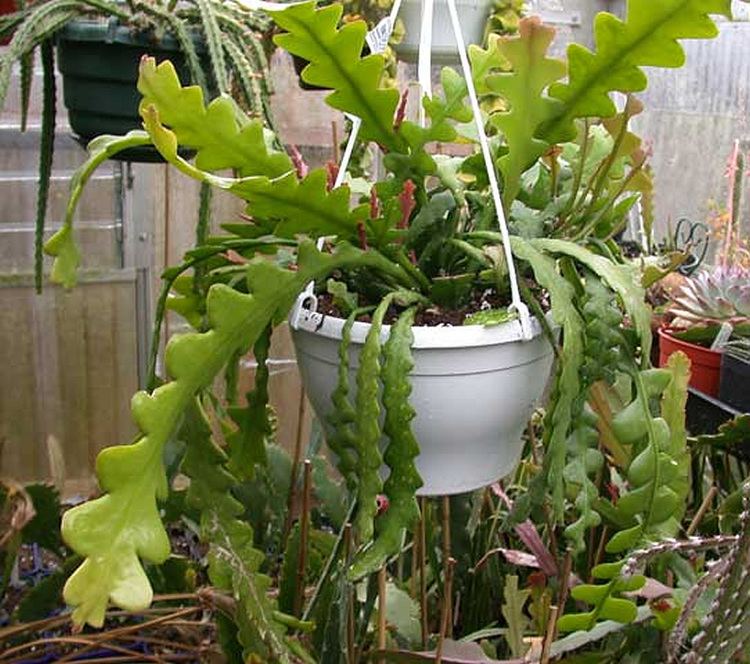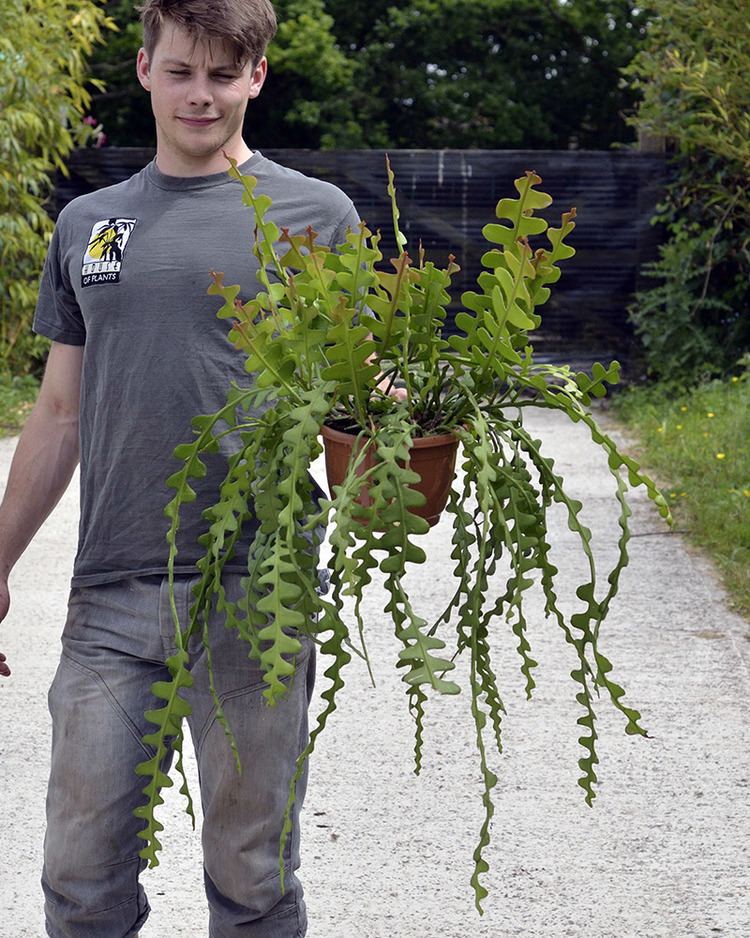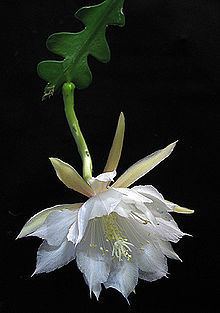Tribe Hylocereeae | Genus Epiphyllum Higher classification Epiphyllum | |
 | ||
Similar Epiphyllum, cactus, Epiphyllum oxypetalum, Selenicereus anthonyanus, Epiphyllum crenatum | ||
Cereus chalybaeus epiphyllum anguliger and epiphyllum oxypetalum flowering 2010
Epiphyllum anguliger, commonly known as the fishbone cactus or zig zag cactus, is a cactus species native to Mexico. The species is commonly grown as an ornamental for its fragrant flowers in the fall.
Contents
- Cereus chalybaeus epiphyllum anguliger and epiphyllum oxypetalum flowering 2010
- Epiphyllum anguliger fragrant flower mini shape bunga wijayakusuma
- Taxonomy and etymology
- Description
- Distribution and habitat
- Cultivation
- Cultivars hybrids
- References

The fruit is delicious and is said to taste like gooseberries. The interior of the fruit looks rather like a kiwifruit, with green pulp and small black seeds.

Epiphyllum anguliger fragrant flower mini shape bunga wijayakusuma
Taxonomy and etymology

No subspecies have been recognized, but the species is higly variable. It is most closely related to Epiphyllum crenatum and Epiphyllum laui. The specific name derives from the deeply toothed stems ("anguliger" = "angle bearing").
Description

This epiphytic cactus has a smooth green skin and extensively branched stems. The primary stems are often woody. Secondary stems are flat and succulent, 20–30 cm long, 3–5 cm wide, and deeply lobed. The lobes are rectangular or slightly rounded. The white or pale yellow flowers bloom nocturnally, exuding a strong, sweet scent; they are 6–20 cm long and 6–7 cm wide. The fruit, 3–4 cm thick, are ovoid and brownish, greenish or yellowish.
Distribution and habitat

The species is endemic to Mexico, occurring as an epiphyte in evergreen forests in Guerrero, Jalisco, Nayarit and Oaxaca. It can be found at elevations between 1,100 and 1,800 m.
This plant was first distributed by the Horticultural Society of London which obtained it from the collector T. Hartweg in 1846.
Cultivation
This easily cultivated, fast growing epiphyte requires a compost containing plenty of humus and sufficient moisture in summer. It should be kept at 16–25 °C (61–77 °F), but temperatures may drop to 10–15 °C (50–59 °F) for shorter periods. It is best grown in semi-shade. It flowers in late autumn or early winter.
Cultivars & hybrids
WC (REDC) 1997. E. anguliger x 'Bonanza Belle'. Persimon orange, darker at edges, outer tepals rusty orange, overlapping, wide form. Style and stamens light orange. Flower medium-sized. Stems small, flat, deeply lobed.
Collected by Thomas MacDougall in 1967, in Oaxaca, Mexico. Flowers white with a lavender-pink throat.
Flowers shorter than in most clones, 6-7,5 cm long and 12 cm wide. Strong grower and a prolific bloomer.
